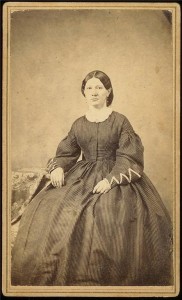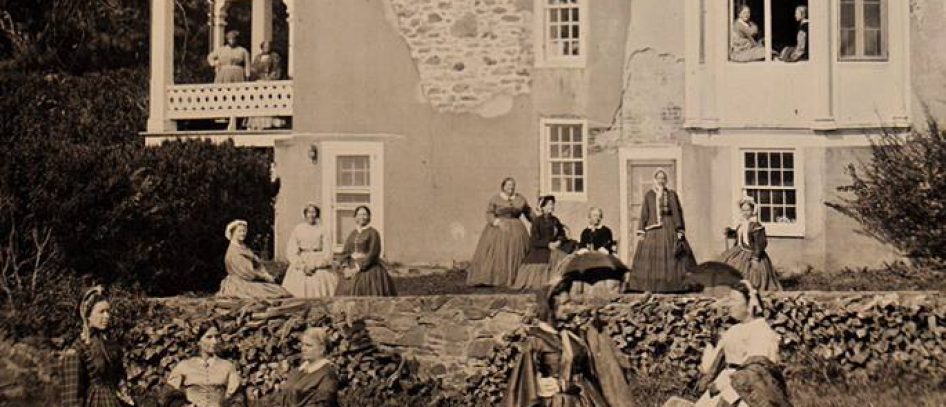 Like everything else in your wardrobe, the style and fabric of your dress will depend entirely on your impression and the scenario at the event you are attending.
Like everything else in your wardrobe, the style and fabric of your dress will depend entirely on your impression and the scenario at the event you are attending.
A Few Things to Consider:
Mutton tricked out as a lamb
Whichever dress you are wearing, be sure it is appropriate for your age. For instance shorter skirts, hats, lower necklines during the day, Garibaldi blouses and white bodies with Zouave jackets were usually worn by younger women. Older more mature and/or married women wore more conservative dresses–perhaps stylish but not necessarily high fashion, but not necessarily drab either.
Dressing to your status
Be sure your dress matches your impression’s social status. For instance if your impression is that of the wife of an itinerate laborer, you should not wear a silk Godey’s fashion plate dress. On the other hand, if you are a planter’s wife visiting camp you should not wear a faded and patched work dress.
You also want to be sure you match the rest of your family. If your husband is wearing the rough working clothes of a laborer, your dress should be of the same social level. Your children as well should be dressed at the same social level as you.
The sub pages here with direct you to information for the different styles of dresses–work dress, the everyday dress, good dress and evening dress. The information provided on the dress pages is for the general, middle of the road impression. If you are portraying a woman on the extreme ends of the social scale, or a specific person you will want to do more in-depth research. Feel free to contact me if you would like further assistance.
